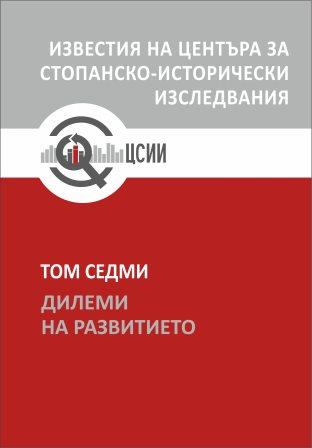Long-term Consumer Price Dynamics in Bulgaria, 1750 – 2020
Long-term Consumer Price Dynamics in Bulgaria, 1750 – 2020
Author(s): Martin Ivanov, Ralitsa Ganeva, Kaloyan GanevSubject(s): History, Economy, National Economy, Economic history, Social history, Modern Age, Financial Markets, Public Finances, Accounting - Business Administration, Marketing / Advertising, Socio-Economic Research
Published by: Център за стопанско-исторически изследвания
Keywords: inflation; real prices; long-term price dynamics; Ottoman Empire; World Wars; communism; transition; Bulgaria
Summary/Abstract: In this paper we explore the long-term developments of consumer prices in Bulgaria for the period 1750–2020. The discussion draws on a component-based index of consumer prices constructed by the authors. We consider both nominal price-level time series and real prices of selected essentials (bread, meat, sugar, tobacco, alcohol, and construction goods used by households). For the reviewed period, we identify two major inflationary episodes, namely the two World Wars and the interwar period, and the period of post-communist transition. For the former, we compute an increase of the price level of about 46 times. For the latter, we arrive at a mind-blowing analogical result of over 3800 times. A curious finding concerns the communist period. Contrary to popular beliefs established through a massive propaganda of no-inflation socialist economies, we discover an overall increase of the price level for that period of nearly 4 times. Real prices of individual commodities are calculated by deflating nominal figures by the value of the corresponding base consumer price index. The inspection of their dynamics leads to uncovering hidden insight related to the developments of specific markets. Also, it allows to assess more clearly the similarities and differences of real price evolutions over different political regimes. For example, we find that the real price of bread in the times of communist rule did not contrast markedly with its levels in preceding and succeeding periods. Another example points to the conclusion that in the years of EU membership, the real prices of most commodities that we consider follow a path of decline. This suggests that statements on the economic developments in those years which rely heavily on the popular perception of lower affordability should at least be taken with a grain of salt. The availability of our results could facilitate further explorations into the nature and specifics of the economic and social development of Bulgaria over a long period of time.
Journal: Известия на Центъра за стопанско-исторически изследвания
- Issue Year: VII/2022
- Issue No: 1
- Page Range: 23-39
- Page Count: 17
- Language: English

